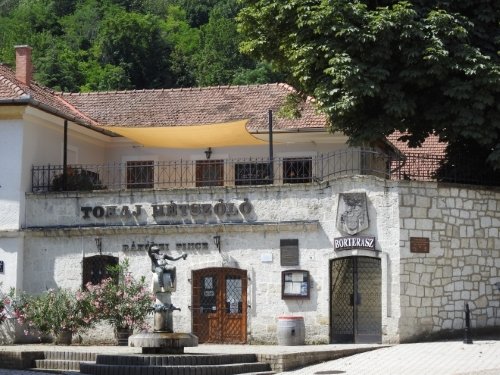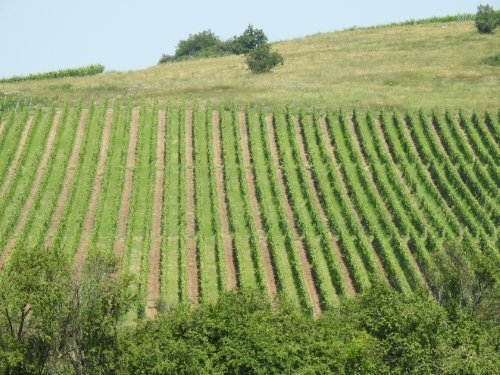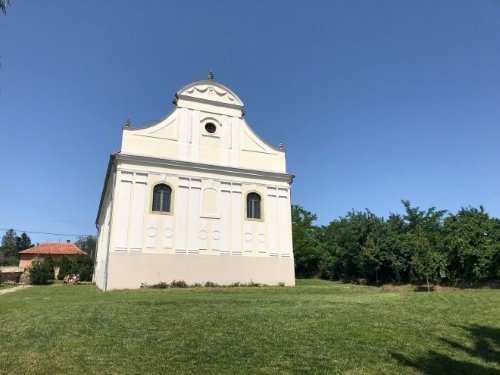The
Tokaji Wine Region
represents a distinct wine-growing tradition that has existed for at least a thousand years and has been preserved intact to date. The region is known for the Tokaji Aszú, the world's oldest wine that uses a process of 'noble rot'. The volcanic subsoil and the microclimate of the area are ideal for this type of viticulture. I visited the region as the last WHS in a series of 3 during my recent short trip to Hungary.

Wine cellar in Tokaj town center
From
Hortobagy
, it takes an hour and a half of driving to arrive in the heart of this wine region. I did not expect too much from it: the site is in the
bottom 100 of our rankings
& well, it’s about wine again and I don’t drink that. Daydreaming along the way in the car, I just hoped to be able to sit in the sunshine on a terrace in Tokaj with a cappuccino and preferably also a piece of cake. That may seem like a simple wish, but something like that is certainly not a given in eastern Hungary.
The town of Tokaj turned out to be small but also somewhat livelier than the places I had seen in the days before. They also had a couple of terraces in the well-kept center, and I had a cappuccino with a piece of plum pie. A plus for Tokaj!

Vines in neat rows
In addition to the usual wine cellars that can only be visited by appointment, they also have a '
World Heritage Wine Museum
' here. It has only been open since 2016. Entrance to it costs 1,000 Hungarian forints (3 EUR). Photos and texts about other wine-growing areas on the World Heritage List are on display. You can also learn more about Tokaj's wine-growing tradition via interactive screens. Unfortunately, they do not have many items that were / are being used for viticulture here in the region in their collection.
The inscribed wine region covers an area of 132 square kilometers. To see some of the vineyards I drove 18 kilometers from Tokaj to Mád. Wineries are certainly prominent here and they also advertise along the road for sale. The vines are planted in neat rows against the mountain slopes. The cultural landscape is not very spectacular however.

The exterior of Mád synagogue
After arriving in the very modest town of Mád I had one goal: a visit to the synagogue. The role of Jews in the Tokaji wine history is an
interesting sidenote
: Jews settled in this region in the 18th century and started producing and trading kosher wine. From that time there was also a synagogue in Mád and a Jewish cemetery.
With foreign funds
that synagogue, one of the oldest in Hungary, was restored in 2004. It is signposted well from the main street. Unfortunately I found it closed though some foreign Jewish visitors were also present. I left without any clue when it can be visited (I was there on a Sunday morning).



